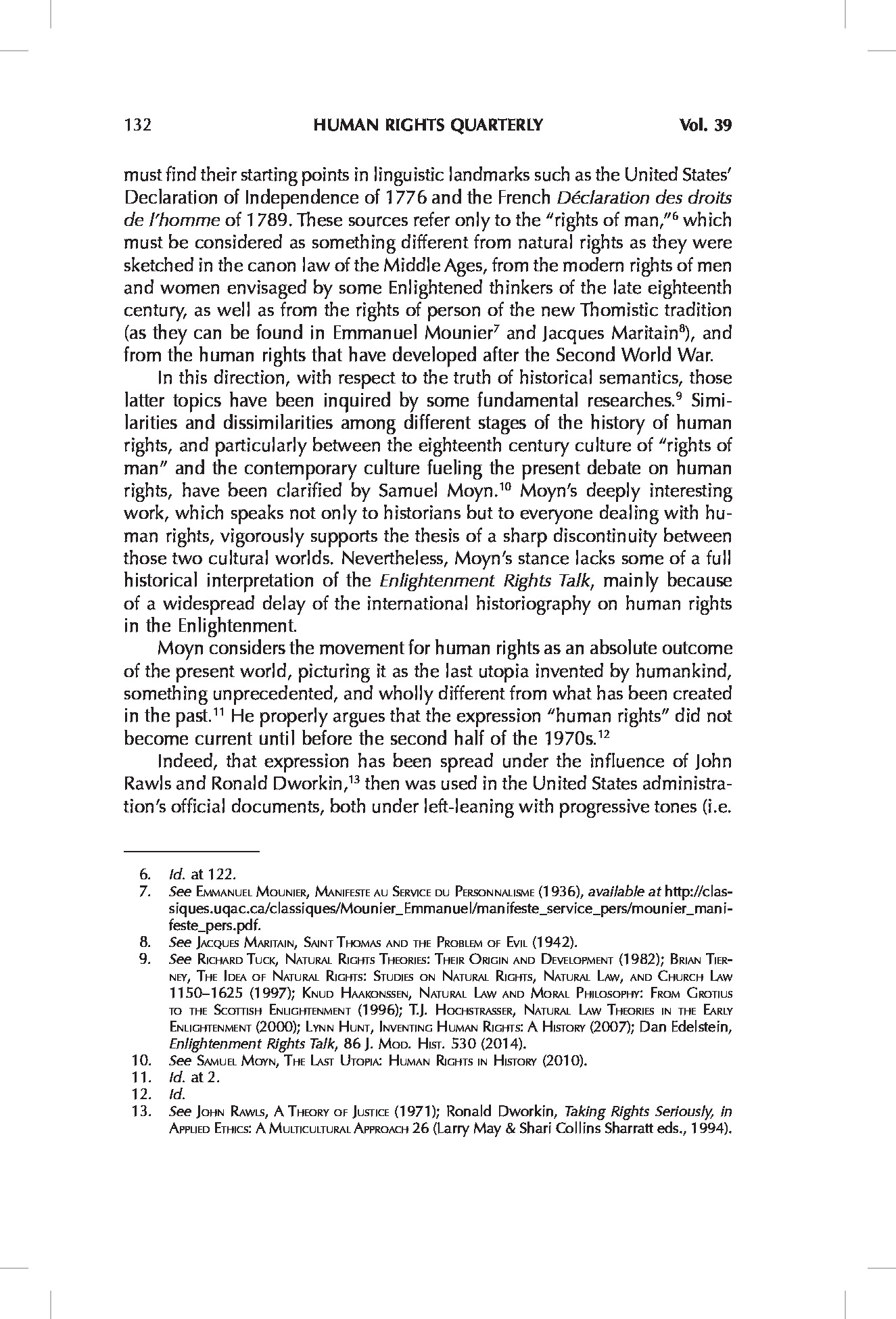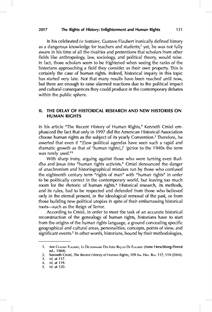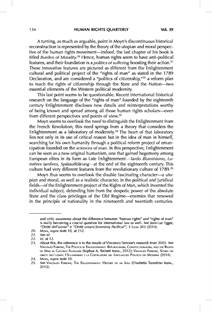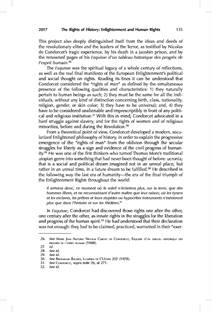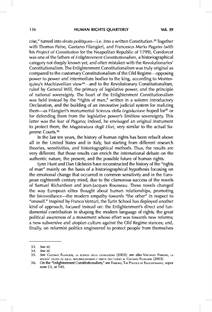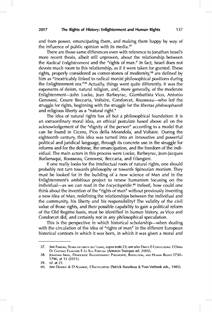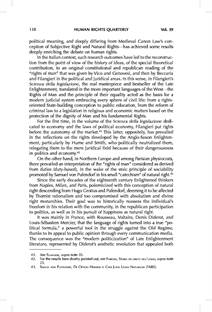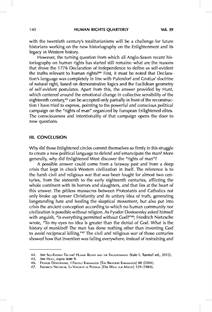Vol. 39
132
HUMAN RIGHTS QUARTERLY
must find their starting points in linguistic landmarks such as the United States’
Declaration of Independence of 1776 and the French Déclaration des droits
6
de l’homme of 1789. These sources refer only to the “rights of man,” which
must be considered as something different from natural rights as they were
sketched in the canon law of the Middle Ages, from the modern rights of men
and women envisaged by some Enlightened thinkers of the late eighteenth
century, as well as from the rights of person of the new Thomistic tradition
8
7
(as they can be found in Emmanuel Mounier and Jacques Maritain ), and
from the human rights that have developed after the Second World War.
In this direction, with respect to the truth of historical semantics, those
9
latter topics have been inquired by some fundamental researches. Simi-
larities and dissimilarities among different stages of the history of human
rights, and particularly between the eighteenth century culture of “rights of
man” and the contemporary culture fueling the present debate on human
10
rights, have been clarified by Samuel Moyn.
Moyn’s deeply interesting
work, which speaks not only to historians but to everyone dealing with hu-
man rights, vigorously supports the thesis of a sharp discontinuity between
those two cultural worlds. Nevertheless, Moyn’s stance lacks some of a full
historical interpretation of the Enlightenment Rights Talk, mainly because
of a widespread delay of the international historiography on human rights
in the Enlightenment.
Moyn considers the movement for human rights as an absolute outcome
of the present world, picturing it as the last utopia invented by humankind,
something unprecedented, and wholly different from what has been created
11
in the past. He properly argues that the expression “human rights” did not
12
become current until before the second half of the 1970s.
Indeed, that expression has been spread under the influence of John
13
Rawls and Ronald Dworkin, then was used in the United States administra-
tion’s official documents, both under left-leaning with progressive tones (i.e.
6. Id. at 122.
7. See emmanuel mounier, maniFeste au service Du Personnalisme (1936), available at http://clas-
siques.uqac.ca/classiques/Mounier_Emmanuel/manifeste_service_pers/mounier_mani-
feste_pers.pdf.
8. See Jacques maritain, saint tHomas anD tHe Problem oF evil (1942).
9. See ricHarD tuck, natural riGHts tHeories: tHeir oriGin anD DeveloPment (1982); brian tier-
ney, tHe iDea oF natural riGHts: stuDies on natural riGHts, natural law, anD cHurcH law
1150–1625 (1997); knuD Haakonssen, natural law anD moral PHilosoPHy: From Grotius
to tHe scottisH enliGHtenment (1996); t.J. HocHstrasser, natural law tHeories in tHe early
enliGHtenment (2000); lynn Hunt, inventinG Human riGHts: a History (2007); Dan Edelstein,
Enlightenment Rights Talk, 86 J. moD. Hist. 530 (2014).
10. See samuel moyn, tHe last utoPia: Human riGHts in History (2010).
11. Id. at 2.
12. Id.
13. See JoHn rawls, a tHeory oF Justice (1971); Ronald Dworkin, Taking Rights Seriously, in
aPPlieD etHics: a multicultural aPProacH 26 (Larry May & Shari Collins Sharratt eds., 1994).
Dettagli
- Page N°:3
- Publication:
- Author:Vincenzo Ferrone

